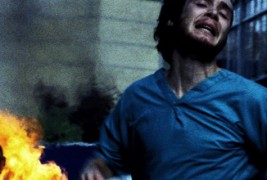
Zombie films, from their very inception, have been the receptacle of the shadow of the western culture. The first zombie film, White Zombie, shows a zombie woman who plays into the original idea of the voudou zombie. In the vodoun tradition, this is a person whose gros-bon-ange, akin to a soul, has been taken from them by a bokor. This zombie was used as a slave. White Zombie, and many films of the 1930’s, shows racial tensions between the white colonizers of Haiti and the black slaves. These slaves eventually overthrew their French slavers and formed the first independent nation in Latin America. This severely altered the sugar industry, forcing Cuba to compensate for the lack of sugar plantations under the control of white Europeans.
This usurpation demonstrates the growing white fear of the Other gaining power, projected onto the black population. The subsequent years show zombies that are slack-jawed and lethargic, adding to racial stereotypes of blacks perpetuated by whites at the time. White Zombie opened the door for projecting racial stereotypes upon zombies. There is also a hint of the fear of inactivity many had during the Great Depression of the 1930s.
After World War II and during the Space Race of the 1960s against the Soviet Union, the zombie film showed a shift toward reanimated corpses with outer space origins. Plan 9 from Outer Space is a notoriously awful film, yet it is perfect for demonstrating the characteristics of zombie films at this time. Again, the projection of humanity’s fear takes the form of a zombie, reflecting the era’s fear of progress, space, and the unknown, as well as anti-Soviet sentiments.
George Romero’s Night of the Living Dead marks the first appearance of the zombies we know and love today. Romero’s shambling beings—that would later become cannibalistic zombies moaning, “BRAINS”—here represented a horrific yet timely fear for a United States that was engaged in the costly Vietnam War and the Civil Rights Movement again. American lives were being lost not only abroad in the war, but on the home front in the crusade for racial equality. In Night of the Living Dead, there again is the projection of racial fears onto this blank canvas of the zombie.
Part of what makes zombies a particularly effective monster onto which a culture can project their fears is the degree to which the zombie is similar (and by reverse, dissimilar) to a human. The zombie carries the same physical form as a human (disregarding the various lovely levels of decay), has the same origin as a human (i.e. babies), and has the same physical limitations as a human (again, disregarding the inability to die or feel pain or any of that stuff). However, it lacks a basic function that separates humans from animals: the ability to reason. Most zombies do not solve problems. They most certainly do not communicate with other beings (ignoring Warm Bodies here). They represent a very scary possibility of a future version of humans. In short, zombies look like us while missing the unique parts of us.
We all have those moments that really bring home and articulate in clear light an existential crisis. For me, that was when, as a nanny, I was waiting to pick up the kids I watched from their school. At 22 years old, I was decidedly not in that stage of my life when I was having kids while juggling piano and gymnastics lessons. As I was waiting, I looked around and noticed how poorly I fit in. Most people waiting were middle-aged women, wearing Chanel shoes and Louis Vuitton purses. I was wearing worn-down Converses, the only name brand I wore, with my driver’s license hanging out my back pocket.
Yes, part of the way in which I accounted for the differences was the age gap, the fact that we were in completely different stages of life, and the financial income differences. And yet, none of the women were any different from each other. They were all, generally, the same. The waiting fathers were gender bent versions of the women. My existential crisis was not for myself, but for them! How were these women supposed to have any sense of self or to have a personal identity when they could look around a playground and see 20 other people just like themselves?
This existential crisis reminded me of Jung’s principle of individuation. A disciple of Sigmund Freud, Carl Gustav Jung broke away from Freud’s all-encompassing oedipal complex to focus on the collective unconscious. Essentially the process of individuation is acknowledging and realizing, and then incorporating all aspects of one’s psyche. To become individuated is, in summary, to become the fullest sense of you. This process requires recognition of the shadow, or the repressed, side of the psyche. This is usually met with resistance on the part of the person seeking individuation. Many people find the process of recognizing and reconciling every aspect of their psyche very painful and traumatic. This is a sort of intimacy with yourself that most people shy away from. This very experience makes zombie films the perfect violent vehicle to express the individuation process.
Global connectivity also leads to a horde mentality. There is now a global mass that is connected from Mumbai to Paris to Menard, Texas. While there may be factions and dissenting voices within the mass, or horde, there is no denying that there is today a horde mentality online and in media. So my experience of existential crisis for the mothers on the playground, waiting to pick up a horde of its own kind (kids), made me pity any one person in that crowd who felt stifled and unable to separate themselves from the horde.
Danny Boyle’s 2008 film 28 Days Later is the perfect intersection of the Jungian concept of individuation within the zombie mythology. In lieu of analyzing the entire film scene by scene, which could easily be done, I will instead pull out a few key scenes to demonstrate my argument. There is a specific way to view most zombie films in Jungian terms. The zombies represent the masses. Zombies make up everyone but the protagonist. The few non-zombie characters apart from the protagonist represent the different archetypal aspects of the protagonist’s psyche. When the characters inevitably die or become infected, as people are wont to do in zombie films, they don’t symbolically become one of the masses. Rather, their transformations generally signify the protagonist’s acceptance of the archetype the character represents. In this case, Jim survives, along with Selena and Hannah. This trinity would, in Jung’s lexicon, represent the unity Jim has achieved. Jim has become an individuated person.
Jim, our protagonist, starts out as a coma patient who wakes 28 days after a zombie outbreak in England. He awakes naked in a locked room, surrounded by medical devices. The scene is reminiscent of a womb. Here, Jim is protected from the horrors of the outside world. Theoretically, he could stay here, simply living off the machines. This presents a comment on how most of the modern world is. Our dependence on mobile and computing devices is perpetuating an incubated lifestyle with no real opportunity for psychological thriving. Jim “wakes up” to this.
After Jim’s startling revelation about the existence of zombies, he is chased by them and subsequently rescued by Selena and Mark. The two explain the situation and provide Jim with vending-machine food. These two characters play the role of the guide. But these characters also play a role as the anima or animus.
In Jungian terms, the anima and animus are an “inner attitude, the characteristic face, that is turned towards the unconscious” (CW 6. para. 803). They are the complement of a person’s ego and they “should function as a bridge…leading to the images of the collective unconscious” (Memories 127). The anima and animus are gender specific to the gender of a person’s ego. Jung came to the conclusion that an “inner feminine figure plays a typical, or archetypal, role in the unconscious of a man” (Memories 186).
At this point in the film, Jim remains a bit of a flat character. He is akin to a newborn babe birthed from his coma gestation. He has not yet been able to ingest his new surroundings and has not been able to properly create a persona, or mask, which he projects into the world. The persona is “that which in reality one is not, but which oneself as well as others think one is” (Jung, CW 9 i, para. 221). While Selena is Jim’s anima and guide, Mark can be viewed as Jim’s persona. Essentially, Jim runs the danger of identifying with his persona, Mark, and not with the aspects of his psyche, of which Selena is a part. And so Mark’s character is shortly hereafter killed, being absorbed by Jim’s psyche without being overwhelmed by it.
This elimination of Mark’s character can also be seen as speaking to the alchemical process which takes place during individuation. The coniunctio, or conjunction, is extremely important in alchemy. This is the union between the two opposites; male and female, sun and moon, perfect unity. Having Jim and Selena alone foreshadows their relationship in a coniunctio as well as Jim’s individuation process.
After joining with a father and his daughter, Frank and Hannah, in search for a radio signal promising a cure, the group of four spends the night in a picturesque glade in the countryside. Selena admits to Jim that he was right when he said that the two of them need Hannah and Frank, that it is nice to not be alone. She kisses him and here is the beginning of true equality between them, with the promise of a true coniunctio. That night Jim has a nightmare and is woken by the soothing voice of Frank. As he is falling back asleep, Jim sleepily calls Frank, “Dad.” This speaks to the acceptance and meaningful interaction Jim is having with the kind father archetype in his psyche which Frank represents. As with Mark, Frank’s subsequent death signals Jim’s continuing evolution and the reconciliation with this particular aspect of his psyche.
Jim, Selena, and Hannah now meet Major West and his remaining soldiers in their fortified manor. Major West represents Jim’s shadow. This is the darkest aspect of our psyche that is the hardest to acknowledge and most certainly the hardest to incorporate into our consciousness. While embodying the rigid, practical pater archetype, Major West is the tough realist that Jim struggles to acknowledge is part of his psyche. Throughout the film Jim rejects any sort of leadership or outright fighter role. After Jim saves the girls from being forced into mating with the remaining soldiers (a pragmatic plan on the Major’s part to continue the human race), he embraces his aggressive warrior archetype. It follows, then, that all the soldiers must die, in order to become part of his psyche! In the course of this carnage Jim is shot in the stomach and the screen fades to black.
At this point, the words “28 Days Later” appear on the screen, as do flashes of Selena’s frantic attempts to save Jim’s life and an aerial shot of green, pastoral fields with the word “Hell” emblazoned upon them. Then Jim wakes up. He’s in a sun-soaked bed, with a patched-up abdomen. Selena is sewing while Hannah is spreading something outside. They are revealed to have all been living in a cottage in the untouched countryside.
Hannah delivers the news that she “hear[s] it coming!” The other two rush out with Selena’s sewed product. Fast aerial shots show a plane flying over the English countryside and starving zombies below. The plane then comes upon the three unfurling a giant cloth “O”, making their “Hell” a “Hello”.
The film also ends with the resurrection of Jim. After being shot, he is able to come back to life. The word “Hell” symbolizes his descent to an actual Hell or underworld, and his triumph over it. Jim has risen up above, like the plane, and sees the world how it truly is. The zombies (masses) are psychically starving, he can see that. He also has embraced all parts of his psyche and completed his individuation process. He has his anima in Selena. Hannah is there to balance the maturity of Jim and Selena with her adolescent naïveté.
In 28 Days Later, Danny Boyle offers an extremely well-made example of how the individuation process can look and feel in the 21st century in the West. Using zombies as a metaphor allows a filmmaker to explore the alienation an individual can feel in these modern times. Cinema offers a contemporary and immediate reflection on the current atmosphere of a culture. Ours is presently dealing with mass consumerism, projections of false lives through social media, and a lack of authenticity. 28 Days Later declares that though this may be the case, a person does not have to live like that. By using Jungian concepts, that person can better identify the world around them and embark on their own soul’s individuation process. Hopefully it is less of a horror for them than it was for Jim.
Works Cited:
Jung, Carl Gustav. The Collected Works of C. G. Jung. Trans. R. F. C. Hull. Vol. 6. Princeton:
Princeton UP, 1976. 408-487.
—. The Collected Works of C. G. Jung. Trans. R. F. C. Hull. Vol. 9. Princeton: Princeton UP,
1981. 116-135.
—. The Collected Works of C. G Jung. Trans. R. F. C. Hull. Vol. 9. Princeton: Princeton UP,
1981. 275-290.
—. Memories, Dreams, Reflections. 1961. New York: Vintage, 1989.
28 Days Later. Dir. Danny Boyle. Perf. Cillian Murphy, Naomie Harris, Brendan Gleeson,
Christopher Eccleston. Fox Searchlight, 2003. DVD
One thought on “Zombie Individuation: A Jungian Look at 28 Days Later”
Comments are closed.

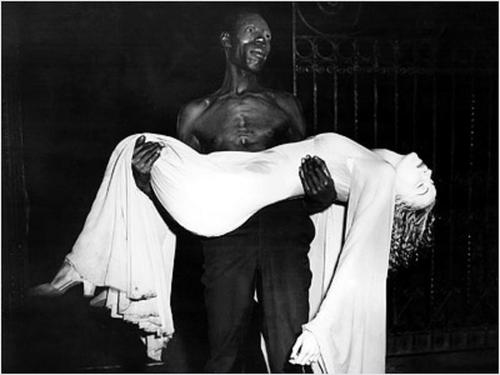
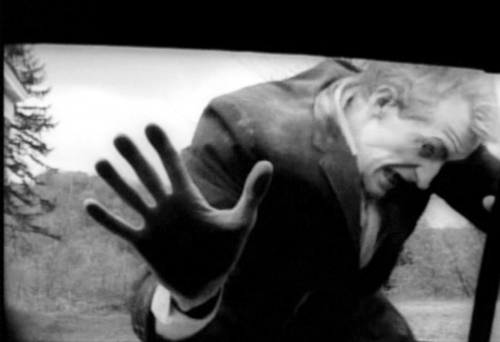
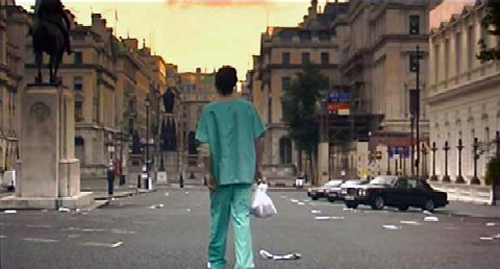
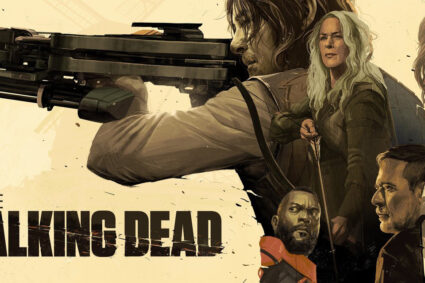
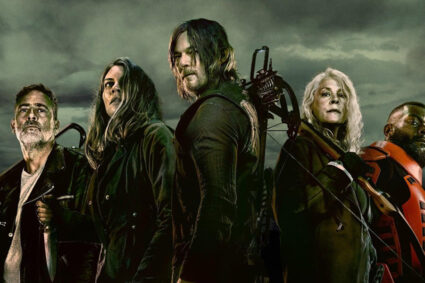











Oh, Chelsea. This is just the coolest. Your fountain-esque knowledge of film paired with your ever-expanding expertise on mythology is a (somewhat) untapped gold mine.